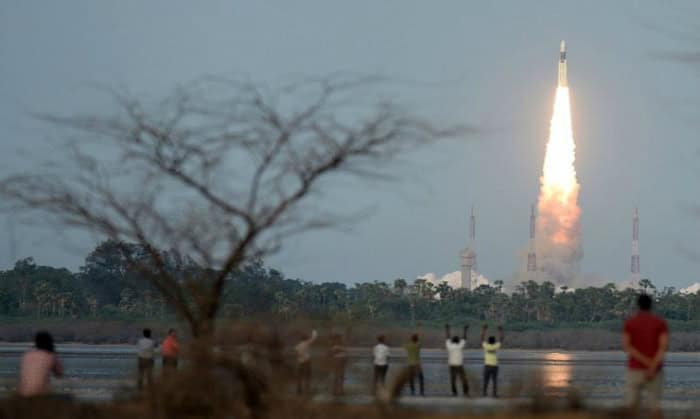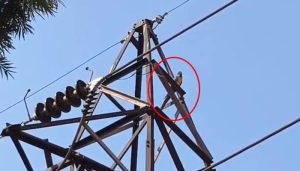NEW DELHI – India’s space agency on Monday successfully launched its heaviest rocket.
Indian Space Research Organisation launched its monster rocket, Geosynchronous Satellite Launch Vehicle Mark III (GSLV Mk III), with 3,136 kg communication satellite GSAT-19 from the spaceport of Sriharikota, in Andhra Pradesh.

The launch will give India self-reliance in delivering large payloads and also prepare the country for its attempt to put astronauts into space, according to Economic Times.
Here are some facts about the rocket according to the Economic Times:
1. The GSLV MkIII-D1 carried payloads of up to 4,000 kg into the Geosynchronous Transfer Orbit (GTO) and 10,000 kg into the Low Earth Orbit. The rocket was developed for 15 years at a cost of around Rs 300 crore.
2. The GSLV Mk III D1 was a three-stage vehicle with indigenous cryogenic upper stage engine designed to carry heavier communication satellites into the Geosynchronous Transfer Orbit (GTO).
3. The GSLV MkIII, which was earlier known as Launch Vehicle Mark-III or LMV Mark III, could be India’s first vehicle to ferry people into spae.
4. The rocket’s main and bigger cryogenic engine was developed by space scientists indigenously. It will help India get a greater share of the multi-billion dollar global space market and reduce dependency on international launching vehicles.
5. GSAT-19 is be powered for the first time with indigenously-made Lithium-ion batteries. These batteries have been made so that India’s self-reliance quotient can increase. In addition, similar batteries can then be used to power electric vehicles like cars and buses.
6. The 43.43 metre tall, 640 ton rocket, will, just over 16 minutes into its flight, sling the GSAT-19 at its intended orbit at an altitude of 179 km.
7. The satellite, which has a life span of 10 years, also features certain advanced spacecraft technologies including miniaturised heat pipe, a fibre optic gyro, micro electro-mechanical systems (MEMS) accelerometer, Ku-band TTC transponder, as well an indigenous lithium-ion battery.














